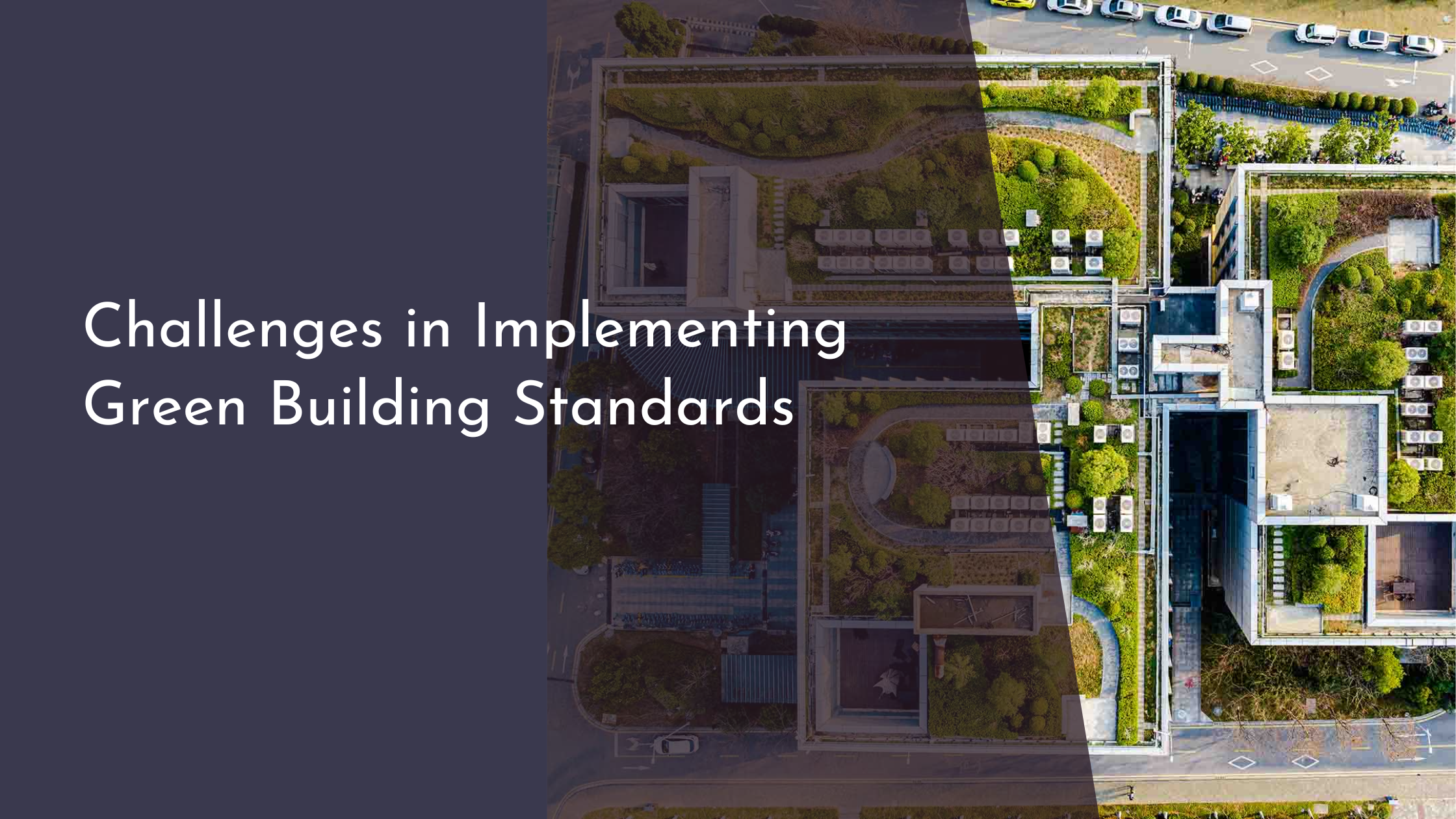Challenges in Implementing Green Building Standards
With the growing awareness of environmental issues and the urgent need to mitigate climate change, the construction industry is increasingly focusing on sustainable practices. Green building standards have emerged as a key component in this endeavor, aiming to reduce the environmental impact of buildings while enhancing their efficiency and habitability. Despite the numerous benefits associated with green buildings, the implementation of these standards poses several challenges. This article explores the major hurdles faced in adopting green building practices, from technical design issues to financial and regulatory constraints.
Understanding Green Building Standards
Green building standards are comprehensive guidelines designed to ensure that buildings are constructed and operated in an environmentally sustainable manner. They encompass diverse aspects such as energy efficiency, water conservation, use of sustainable materials, and indoor environmental quality. Standards like LEED (Leadership in Energy and Environmental Design), BREEAM (Building Research Establishment Environmental Assessment Method), and WELL focus on creating buildings that are not only resource-efficient but also provide healthier living environments for occupants. Understanding these standards is crucial for architects, builders, and developers who aim to contribute to a more sustainable future.
The complexity and diversity of green building standards can be overwhelming for stakeholders. Different standards may prioritize various aspects of sustainability, and keeping up with these evolving guidelines requires continual learning and adaptation. Moreover, the lack of uniformity in standards across regions and countries often complicates compliance for international projects. Stakeholders need to navigate these complexities to ensure their projects are both compliant and effective in achieving sustainability goals.
Technical and Design Hurdles in Green Building
Implementing green building standards often requires integrating advanced technologies into design and construction processes. This can pose significant technical challenges, especially when traditional construction practices are deeply entrenched. For instance, incorporating renewable energy systems, advanced HVAC systems, and sustainable materials demands a high level of technical expertise and often necessitates retraining for industry professionals. The transition to these innovative practices is critical for the successful implementation of green building standards.
Designing buildings that meet green standards can also be challenging. Architects and engineers must balance aesthetic appeal with functional sustainability. This means considering aspects like site orientation, natural lighting, and passive solar heating, which require additional planning and innovation. Sometimes, the integration of sustainable features may clash with existing architectural norms or aesthetic preferences, necessitating creative problem-solving to achieve both visual and environmental objectives.
Financial Constraints and Budget Planning
One of the most significant challenges in implementing green building standards is the perceived high cost. Sustainable materials, advanced technologies, and specialized labor often come at a premium, which can be daunting for developers and stakeholders with tight budgets. However, while initial costs may be higher, green buildings tend to offer significant savings over time through reduced energy bills and lower maintenance costs. Thus, effective budget planning and a long-term financial perspective are essential to overcome these financial constraints.
Securing funding for green building projects can be challenging, especially in regions where financial incentives for sustainable construction are lacking. Developers might struggle to find investors willing to support green initiatives due to the misconception that they yield low returns. To bridge this gap, stakeholders must emphasize the long-term economic and environmental benefits of green buildings and seek out financial programs or incentives that support sustainable construction practices.
Overcoming Regulatory and Bureaucratic Challenges
Navigating the regulatory landscape is another major hurdle in the implementation of green building standards. Building codes and regulations can differ significantly across regions, creating complexities for developers who must ensure compliance with multiple sets of rules. In some cases, existing regulations might not align with or even obstruct green building practices. Consequently, overcoming these bureaucratic challenges requires strategic planning and a thorough understanding of local and national regulations.
Working through bureaucratic processes can be time-consuming and daunting, often leading to delays in project timelines. To mitigate these issues, stakeholders can engage with local authorities early in the planning process to ensure their projects meet all necessary requirements. Collaborating with policymakers and advocating for more supportive regulations can also help ease the way for future green building projects, fostering an environment where sustainable development is prioritized and streamlined.
Despite the challenges associated with implementing green building standards, the pathway to sustainability in construction is not only necessary but achievable. Through a concerted effort to understand and navigate technical, financial, and regulatory hurdles, the construction industry can lead the charge towards a more sustainable future. By embracing innovation, planning effectively, and advocating for supportive policies, stakeholders can turn these challenges into opportunities for growth and excellence in sustainable building practices. As we move forward, the continued development of green buildings promises to contribute significantly to environmental conservation and improved quality of life for future generations.

